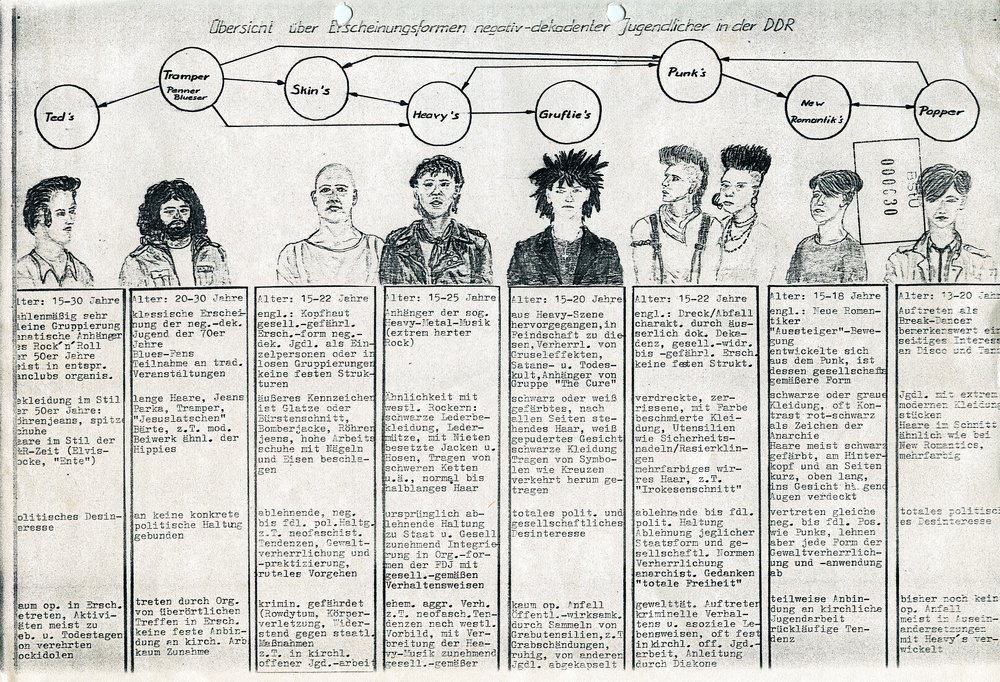For the MfS, skinheads were merely another of these deviant „negativ-decadent“ subcultures. What attitudes the youths actually held was irrelevant. Crimes committed by skinheads were usually depoliticised and simply described as „youth violence“ and „rowdyism“. In any case, the punk scene was the main focus of state repression for a long time. In the eyes of many GDR citizens, right-wing skinheads had a well-groomed appearance and were considered hard-working - this also gave them an advantage over punks in the eyes of the state security.
October 1987 marked a change in the way the state dealt with neo-Nazis in the GDR. A punk concert was held in the Zion Church in East Berlin. Here again it becomes clear how important church spaces were for the GDR opposition and for non-conformist youth cultures. The concert was attacked by skinheads from East and West Berlin, and the perpetrators were arrested afterwards. After the West Berlin press reported on it, the incident could no longer be hidden from the GDR public either.
The reaction of the GDR judiciary was harsh; the perpetrators received long prison sentences. The attack in the Zion Church marked a new strategy of the state in dealing with right-wing violence: harsh punishments as a deterrent. However, a social discussion, with a self-reflection on where right-wing youths could come from in a supposedly „anti-fascist state“, failed to materialise.
The MfS also continued to proceed on the assumption that the „skinhead ideology“, as it was called, was „imported“ from the West. After the Zion Church attack, the security authorities increasingly focussed on skinheads. The Stasi headquarters in Berlin issued instructions to all GDR districts to report on skinheads. For the district of Gera (to which Jena belonged), this state approach towards the radical right-wing scene can also be traced at the local level, as shown by the analysis of sources from the MfS, reports from the People's Police (Volkspolizei) and the public prosecutor's office.

